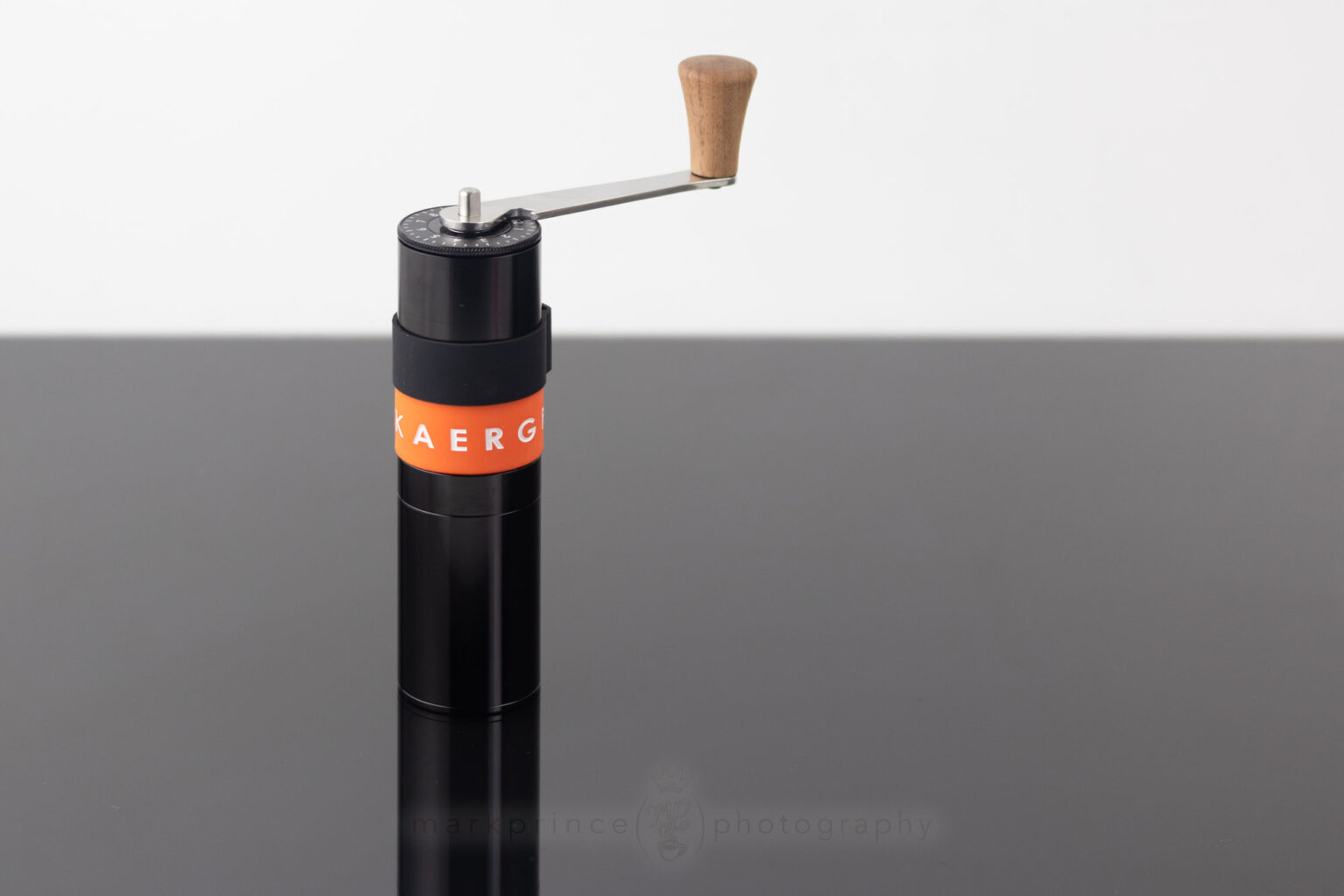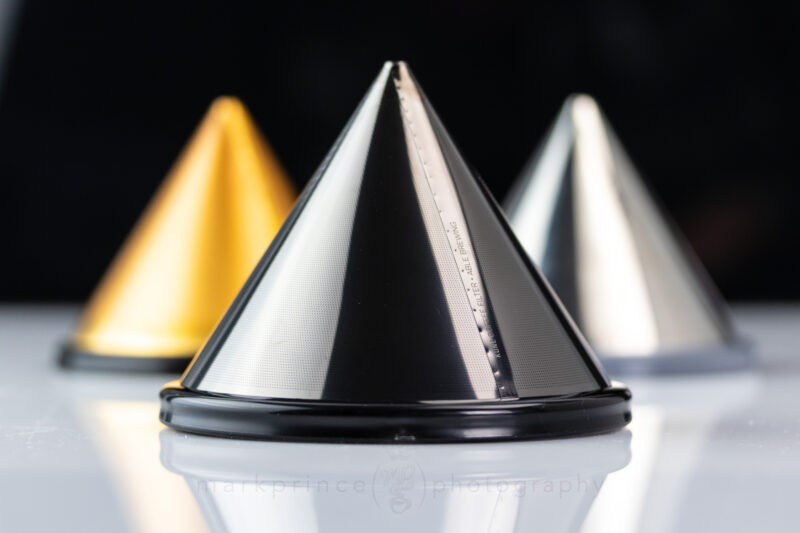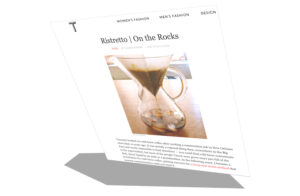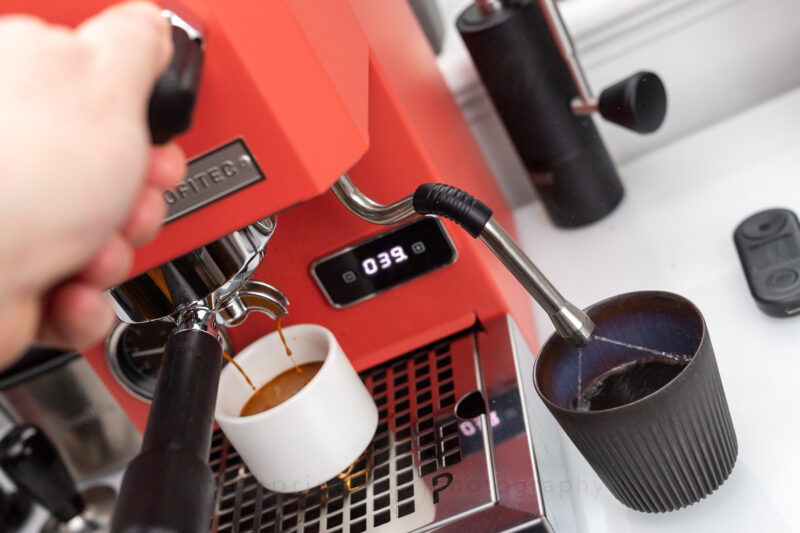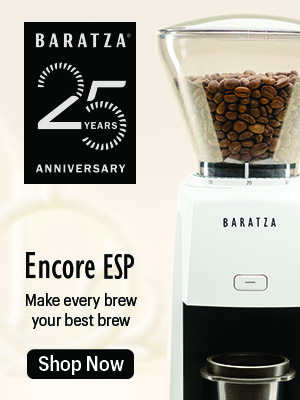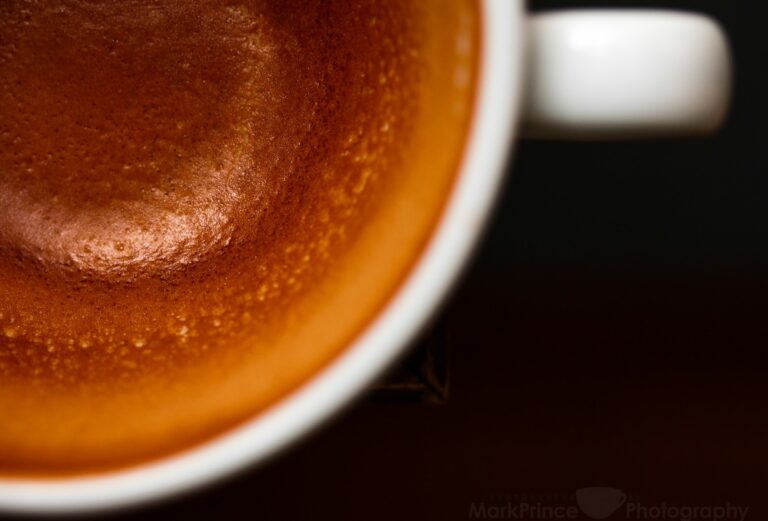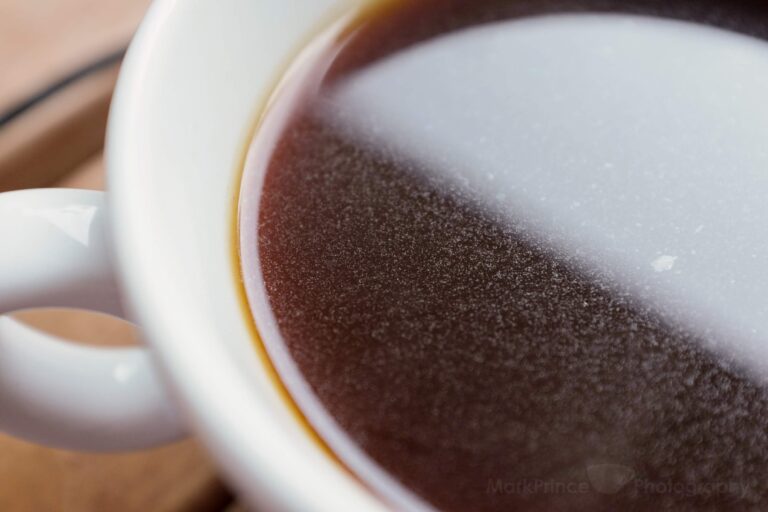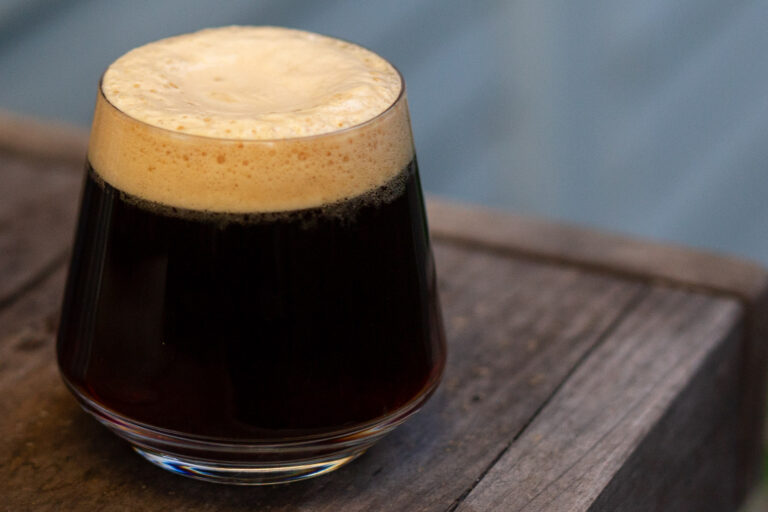It’s just amazing to see the industry built around the AeroPress. Take hand-cranked coffee grinders for instance. Before the AeroPress (and before the ushering in of the golden age of pour over coffee with the coming of the Hario V60), a hand cranked grinder meant buying a Zassenhaus box grinder with pressed burrs and a little pull out wooden drawer. Or a big brass column of ornate metal with a crank handle, often called a Turkish Mill or Turkish Grinder. Its grinds bin typically screwed onto the bottom.
Things started slow at first. Hario brought out a couple of hand cranked mills – the Skerton and the Mini – mainly for their V60 system. People started using the Hario Mini for AeroPress on the go. It wasn’t a very good grinder, but it was portable. And it got some other makers thinking about the possibilities of a grinder to pair with the AeroPress.
In 2010, an Osaka based company introduced a ceramic-mill burr in a metal tower shape, borrowing slightly from the old Turkish mill styles, but small and compact… compact enough to slide into the inner plunger of the AeroPress (if you removed the mill’s rubber collar). That mill is the Porlex Manual Grinder, and it made its global debut at the 2012 Specialty Coffee Association of America (SCAA) Expo, creating an entirely new manual grinder category.
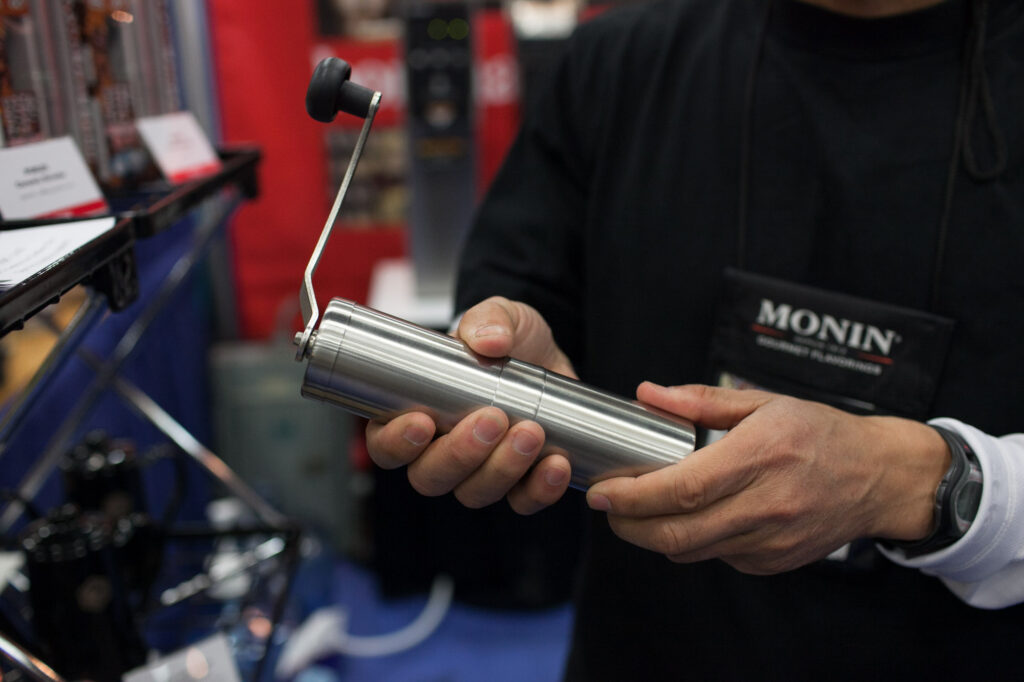


The Porlex was insanely popular but also not without grind issues. It suffered from a fair amount of burr wobble. That’s where the rotating burr, mounted on the crank arm’s spindle, would travel sideways under the load of the hand rotating the crank, which produced wildly different grind particle sizes. The ceramic burr wasn’t very good either. But it was small, it was mostly metal, and it travelled well with the AeroPress.
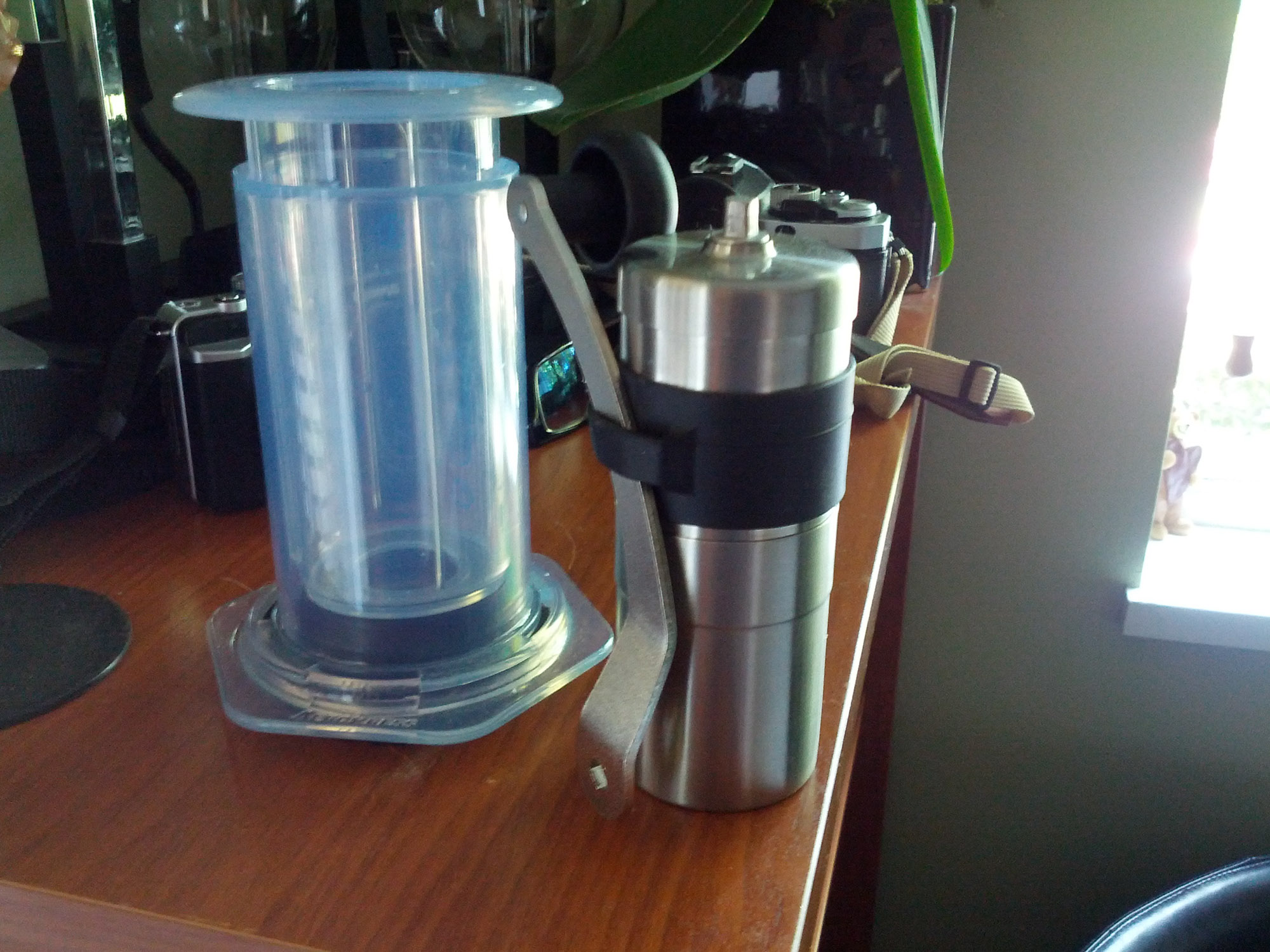
Witnessing the success of the Porlex convinced other companies and makers to get into the hand cranked manual grinder game. Some produced massively over-engineered, excellent output models like those from Orphan Espresso, but they weren’t what you’d call portable. Others produced near clones of the Porlex, but with even worse burrs and bad engineering designs.
A few companies worked on creating a better Porlex, though the idea of it fitting inside of an AeroPress kind of went to the wayside. This was to the detriment of the growing AeroPress market and fanbase. By 2017, there seemed to be an almost glut of mini tower-style, hand cranked manual grinders on the market. Some were a lot better than others, some cost over $300, but very few that actually fit inside of an AeroPress.
In 2017, one of these companies – Made by Knock – had a very popular hand grinder called the Feldgrind. It just missed fitting inside the inner plunger of the AeroPress by a few mm. Even if it did fit, it’s quite a tall hand grinder so it would have easily doubled the AeroPress’ packed height.
Knock decided to go back to what made the Porlex popular: a grinder that fit inside an AeroPress. The difference is, theirs would be a well designed, well manufactured hand crank grinder that also happened to slot nicely inside the AeroPress plunger tube. A true travelling companion for the brewer, one that blew the Porlex away in terms of grind quality and usability.
That grinder is the Aergrind, by Made by Knock.
The Aergrind Grinder by Made by Knock
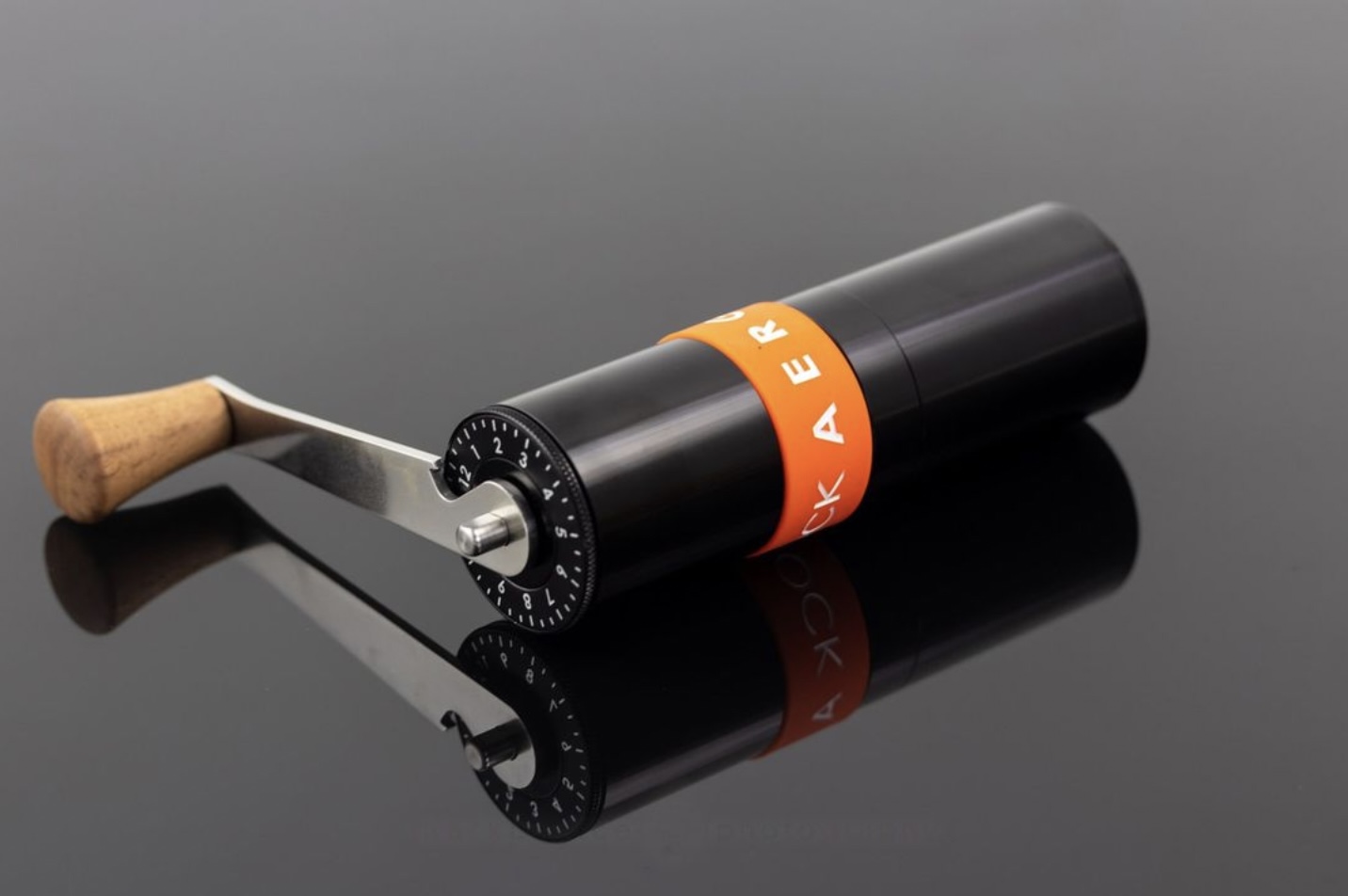
The Aergrind started life as a Kickstarter Project in 2017. I asked Peter Kilpatrick, founding partner and managing director of Made by Knock about this. “We chose Kickstarter because at the time it was the best regulated and understood of the crowd funding platforms.” Kilpatrick said. “Going to the end users was really the most practical way to get the grinder out there fast and wide enough.”
Kilpatrick continued, “The Kickstarter project was a great success in that we hit our funding goal within 24 hours and then saw a really strong growth following on from that. We also decided to cap the maximum amount of units after 2 weeks to ensure that the scale of production we were looking at was not beyond what we felt we could deliver to hit that timescale.”
With the funding and interest secured, Made by Knock moved into the manufacturing stage very quickly after the Kickstarter campaign. I was curious if there were any changes from the Kickstarter described model and prototypes, and the first shipping models in 2018. “Not many changes at all as the design was an organic development of where we had taken the Feldgrind models.” Kilpatrick said. “(In our initial production run), about 40% of the first production run was available to Kickstarter and the rest became our first retail grinders. Of that first 3,000 units across 2 large production runs, they were nearly identical to our 100 beta models, save for one minor cosmetic error we corrected.”
In 2018 after the initial production runs, the grinder did get some design changes, including a re-design of the grinder’s dial lid, going from plastic to an all metal design.
The bigger production change was moving all manufacturing the grinder’s parts back to the UK from the Far East. This move was made for several reasons, not the least of which was the pride in having the grinder not only assembled in the UK, but manufactured there as well, even though the cost was much higher. This move ensured Made by Knock had far greater control over the rate and quality of production, and skipped all the massive lead times they had to battle with parts made in various parts of Asia.
The 2022 Aergrind
Fast forward to today, and the Aergrind has matured even further, with some pretty impressive refinements.
The lid and grind selection method of the grinder have both been further enhanced and modified. It’s easier to read and much more durable. The lid maintains Knock’s very unique way of setting the grind through an entirely stepless selection method with literally hundreds of grind settings available.
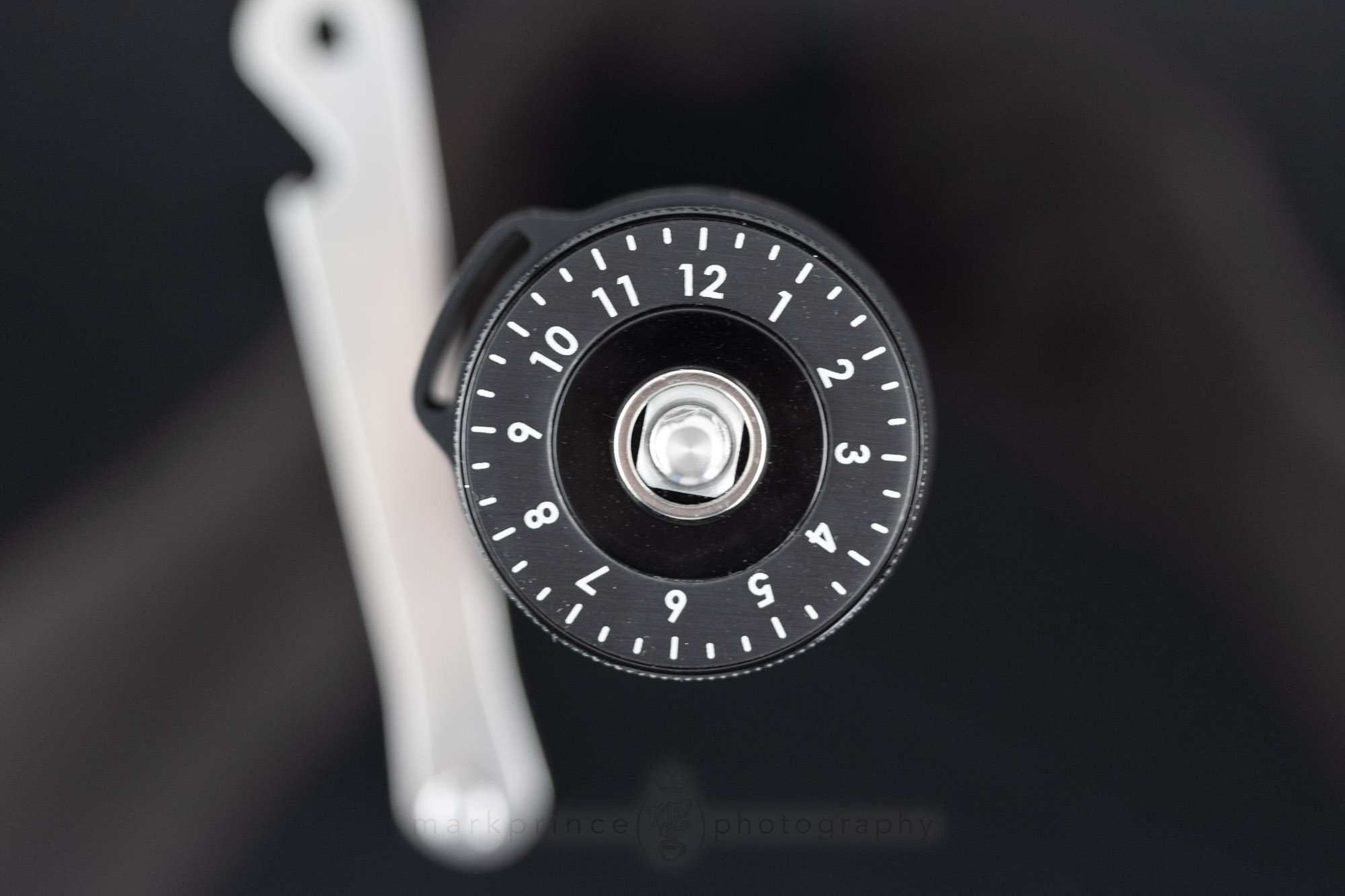
Inside, there are a lot more changes. The burr set, from Italmill, is all new, and an improvement over an already fantastic set of burrs used in the original Aergrind. The new burr set, based on the aggressive initial tooth pattern of the originals, is titanium nitride coated.
Why is this a big deal? First, the burrs should last pretty much forever in this grinder. Second, TiNi coated burrs have less friction and thus less heat produced in the ground coffee as it is grinding. Some pros have concerns about heat generated in ground coffee, especially with aggressive cutting patterns, so this is a definite benefit, even in a manual grinder.
Made by Knock also gave the inner housing a work over in the 2022 version of the Aergrind. The bearing axle is 100% longer and twice as strong now. Tied in with the improved lower mount brings several long term improvements: product longevity (to match the lifespan of those burrs!), and further minimizing of the achilles heel of manual crank grinders: burr wobble.
The new axle, mount and grind selection mechanisms also provide better overall performance across a wide range of grind sizes, from turkish all the way up to chunky 1500 micron press pot grinds.
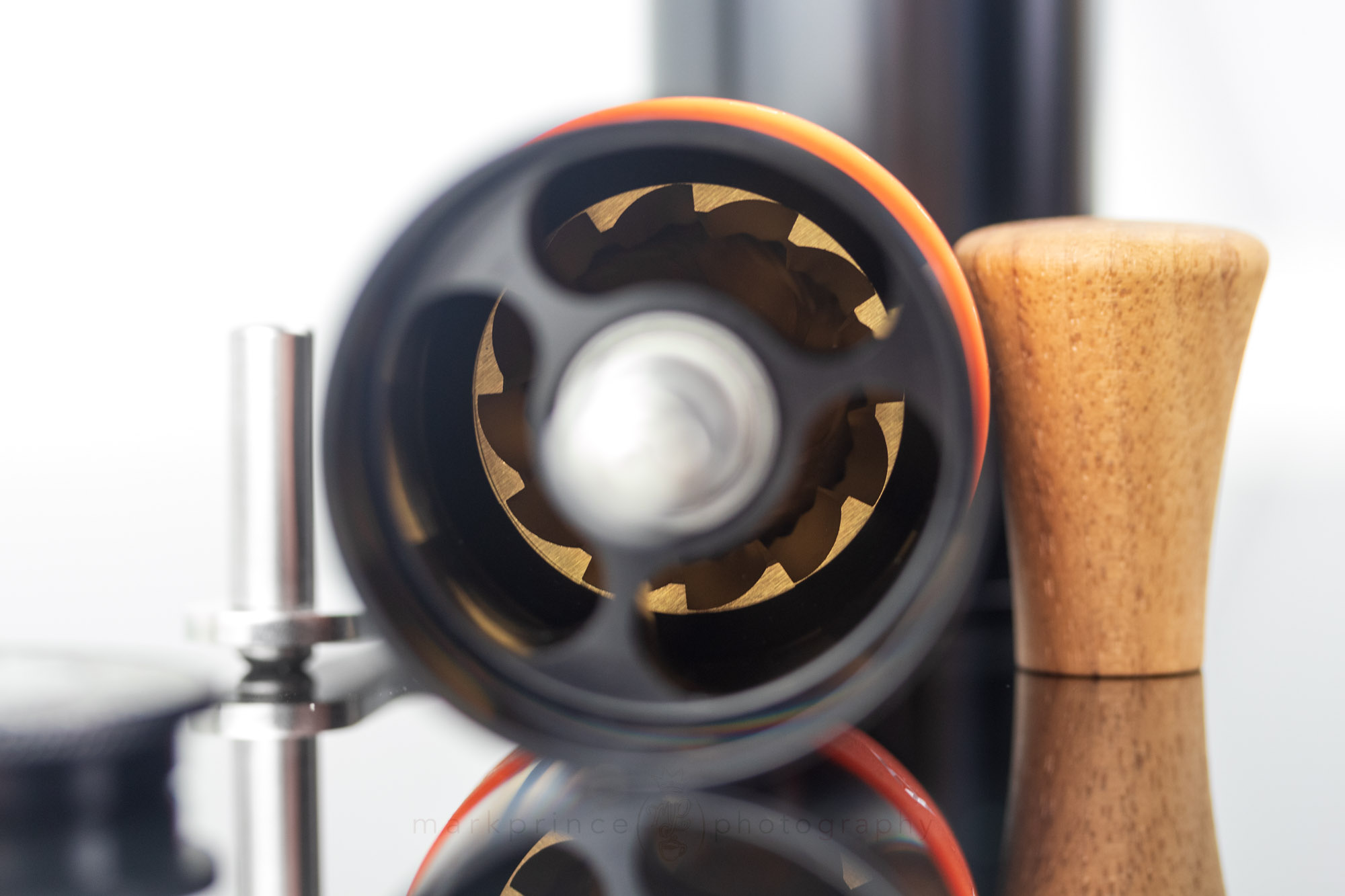
There’s other areas Made by Knock improved in the Aergrind, including:
- New spring design used for the spring-loaded burr action (so it never stalls in a previously-set grind position).
- All packaging now is paper based (100% recyclable and renewable resources).
- Using a wood handle now removes the last plastic from the grinder (and just works better as a handle).
- Lid is now magnetic for easy tactile-feedback securing on top.
- Made by Knock silicone collar fits well and still lets the grinder fit inside an AeroPress.
- The second silicone collar, meant for holding the crank handle, is slightly loose (but still secured) on the Aergrind because it’s meant to be wrapped around the AeroPress’ outer body for travel and holding of the handle.

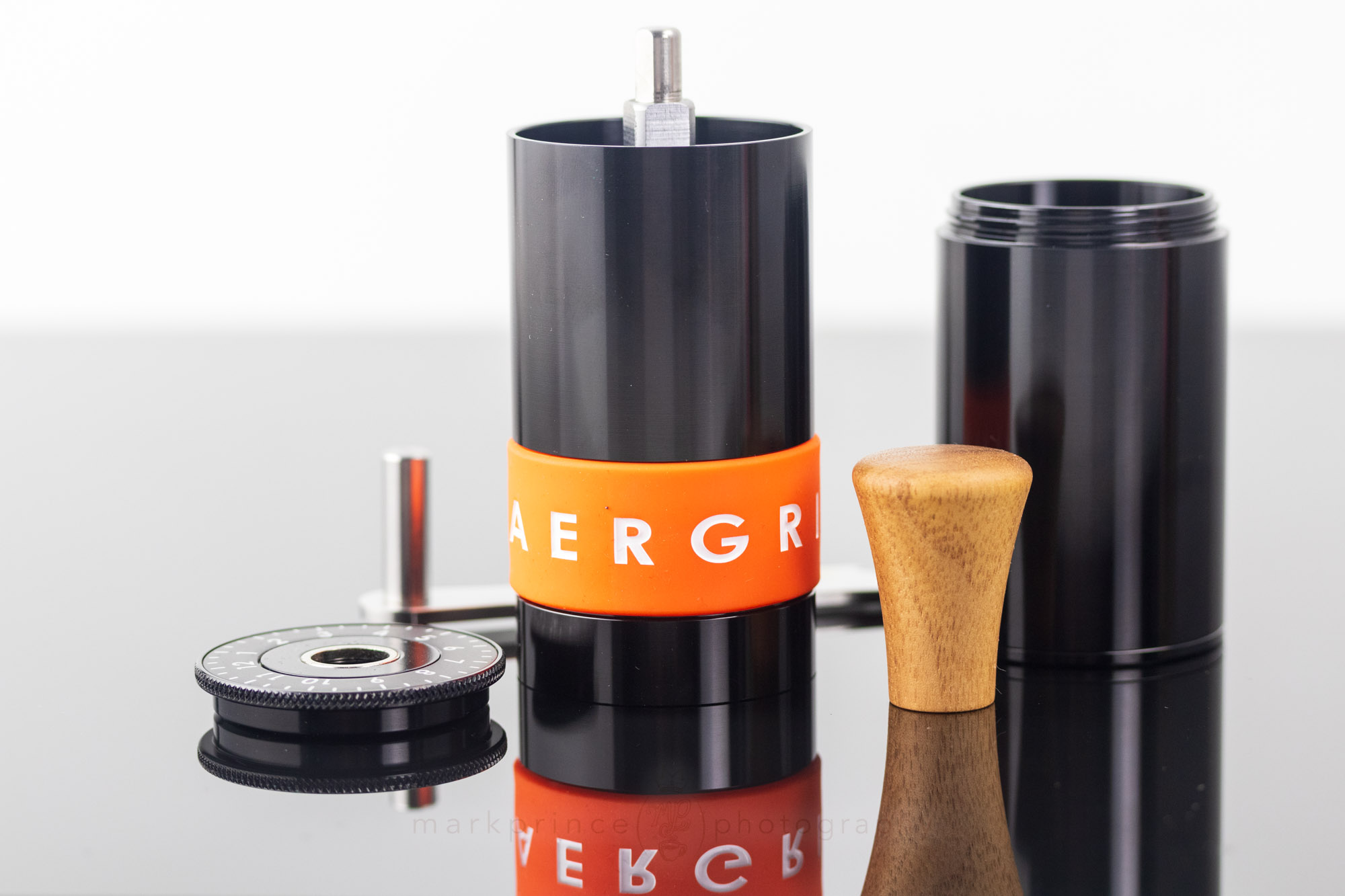
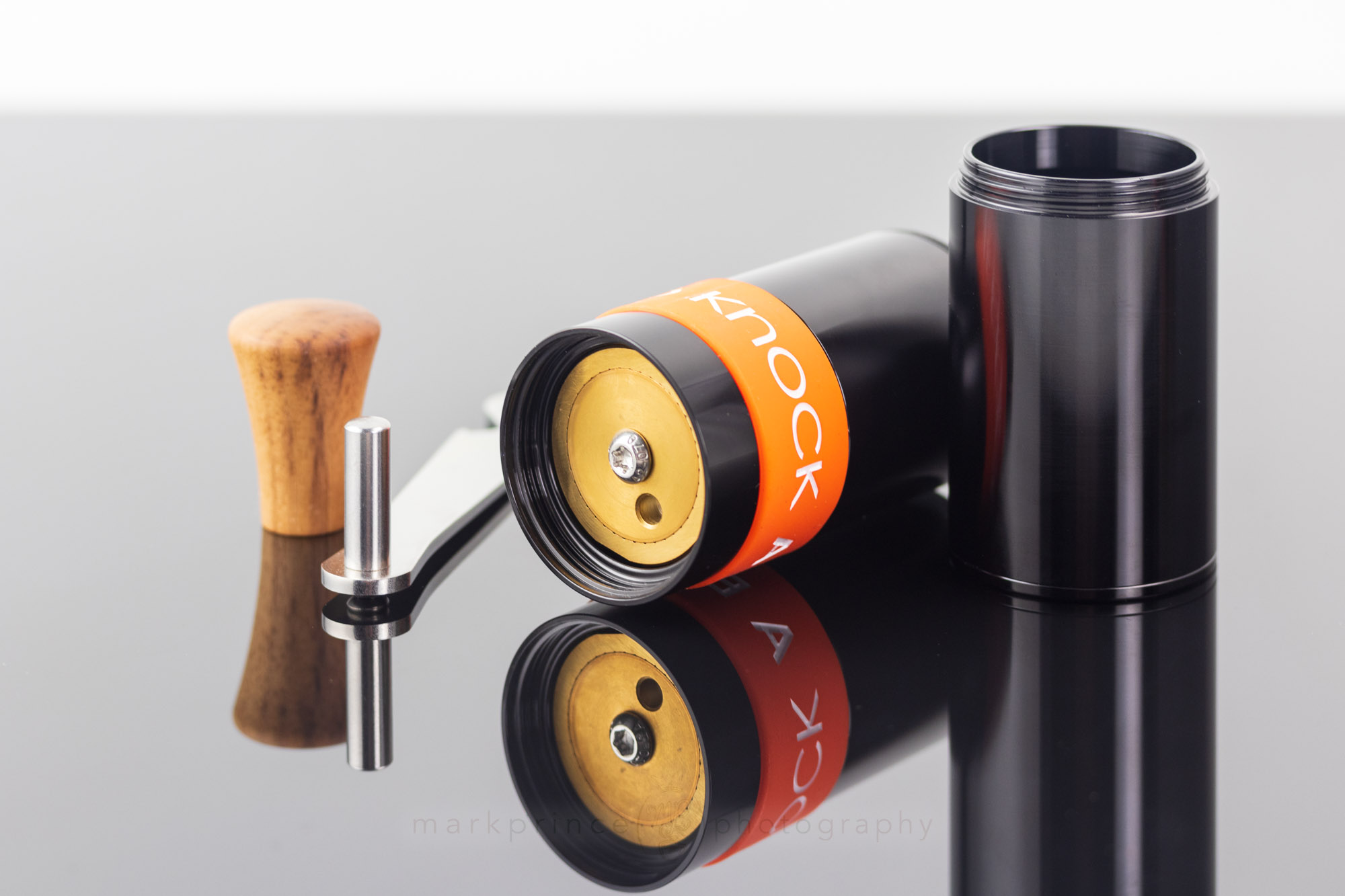
I asked Kilpatrick what he was proud of most in the Aergrind grinder, especially this new 2022 variant.
“In a market now full of budget clones, the Aergrind is a handbuilt, compact grinder that we feel out-performs anything in its class, and many grinders costing twice as much.” Kilpatrick said. “The Aergrind’s design is unique, its proudly plastic-free, the fit and finish are high end and we really feel it is a pleasure to use everyday. Faced with stiff competition from state subsidised mass produced & price dumped products, we could have tried to slash costs and just branded up a Chinese white label “good enough” grinder. Instead we went harder on design refinements and performance to improve the standard that customers can expect from us and the investment return for their money. That’s what makes our team proud of each and every Aergrind built.”
We’ve been testing the Aergrind for nearly a month now, and are in the process of writing up a full review of it. No doubt about it: the hand grinder market is crowded these days with a lot of different offerings, some from famous brand names, and a lot of very similar looking units with several dozen different nonsensical names you can find on aliexpress. The Feldgrind from Made by Knock had a serious, almost cult-like following for its quality and approach to hand grinders. The Aergrind builds on that and makes it a substantial player in the crowded market, especially with the evolved product we have today.
Look for our full review of the Aergrind towards the end of November.
In the meantime, if you want one, Cafune in Canada has it for $239, and Prima Coffee has it for $185USD.
NB: Neither of these companies are CoffeeGeek supporters, and these are not affiliate links.
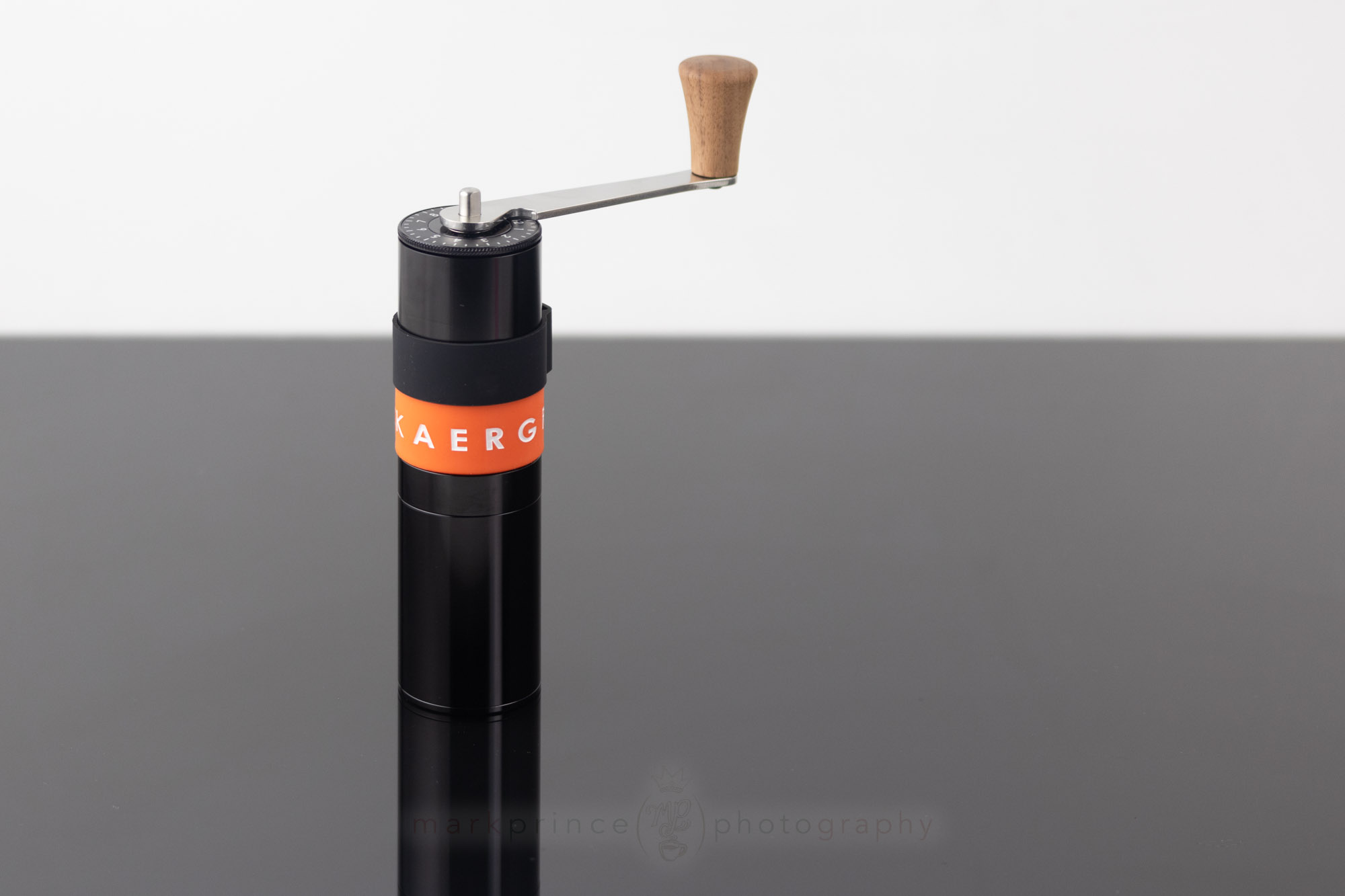
Mark has certified as a Canadian, USA, and World Barista Championship Judge in both sensory and technical fields, as well as working as an instructor in coffee and espresso training. He started CoffeeGeek in 2001.
-
Mark Princehttps://coffeegeek.com/author/markprince/April 21, 2024
-
Mark Princehttps://coffeegeek.com/author/markprince/April 16, 2024
-
Mark Princehttps://coffeegeek.com/author/markprince/April 10, 2024

